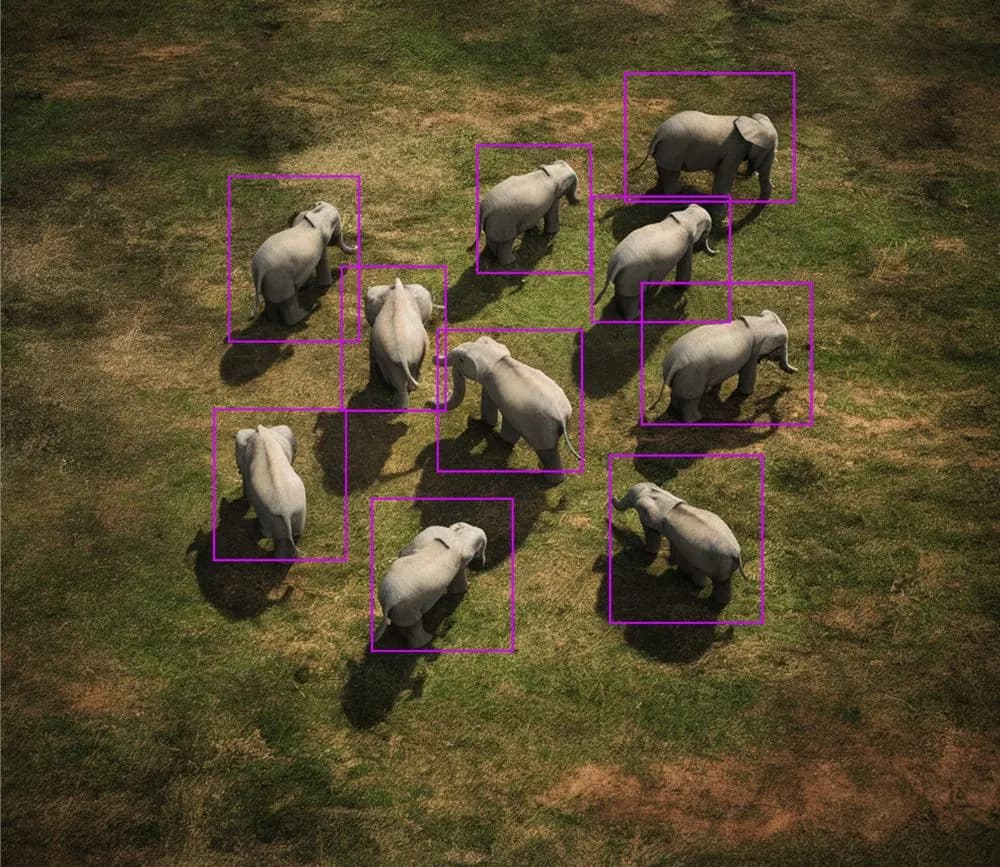
Monitoring & Counting African Elephants From Space
In recent years, the decline of the African elephant population has become an urgent global concern. From poaching to habitat destruction, these majestic creatures face numerous threats. However, advancements in technology, particularly in Earth observation and artificial intelligence, are offering new hope. SkyFi, a leader in geospatial analytics, is at the forefront of these efforts, using satellite imagery and machine learning to monitor, count, and ultimately, protect elephant populations. Before jumping in, let’s cover some topics discussed.
Before jumping in, let’s discuss some topics around this issue.
What conservation efforts are being used for African elephants?
Conservation efforts for African elephants focus on several key strategies:
Preventing illegal hunting: Anti-poaching initiatives are critical in protecting elephant populations.
Habitat protection: Establishing and maintaining protected areas and wildlife corridors to ensure safe habitats.
Monitoring populations: Using technology to track elephant numbers and detect poaching activities.
Combatting ivory trade: Efforts to curb illegal ivory trafficking and reduce market demand.
How do countries in Africa protect elephant herds?
Countries in Africa, in collaboration with conservation groups, have designated land for wildlife conservation, including corridors that connect these protected areas. However, a significant portion of elephant habitats remains unprotected, making anti-poaching efforts and the disruption of illegal wildlife trade crucial in safeguarding these herds.
How can SkyFi help count and monitor elephants from space?
SkyFi uses high-resolution satellite imagery, synthetic aperture radar (SAR) for all-weather monitoring, and AI algorithms for automated detection. Multi-spectral imaging tracks habitat changes, providing comprehensive, accessible data to conservationists for enhanced elephant monitoring and protection efforts.
Outside of imagery, how can we track elephants from space?
Tracking elephants from space involves the use of satellite technology such as GPS collars, which allow researchers to accurately monitor elephant locations multiple times a day. This data helps in understanding their movement patterns, habitat utilization, and seasonal behaviors.
What is the environmental program for elephants?
The African Elephant Conservation Fund, managed by the U.S. Fish and Wildlife Service's International Affairs Program, supports conservation initiatives for both savanna and forest elephants across Africa. This program focuses on protecting their habitats and promoting sustainable conservation practices.
What is the elephant conservation program?
Elephant conservation programs encompass various strategies, including:
Transboundary conservation: Collaboration across borders to protect elephant migration routes.
Anti-poaching measures: Patrols, security infrastructure, and legal enforcement to prevent illegal hunting.
Combating illegal trade: Efforts to reduce and prevent the trafficking of ivory and bushmeat.
Research: Investigating elephant diseases and other factors affecting their populations.
The Human-Elephant Conflict
Human-elephant conflict is a significant issue in Africa, where the rapid expansion of human settlements and agricultural activities encroach on elephant habitats. Traditional methods to deter elephants from farms include chili fences, bee fences, and technological early warning systems. Despite these efforts, effective long-term solutions require accurate data on elephant populations and their movements.
Satellite Imagery: A New Frontier in Wildlife Monitoring
Conventional methods for monitoring elephants, such as aerial surveys and camera traps, have their limitations. High-resolution satellite imagery offers a promising alternative. SkyFi employs state-of-the-art satellites to provide multispectral imagery at a resolution of 30 cm. This high level of detail allows for precise monitoring of elephant herds across vast and varied landscapes.
Machine Learning Enhances Detection
Machine learning simplifies the process of identifying and counting elephants in satellite images. By using large datasets of labeled images, algorithms can be trained to recognize elephants. High-resolution images allow the machine to detect and differentiate elephants from other objects. This automated detection reduces the time and cost of manual analysis, providing an efficient solution for monitoring elephant populations across large areas. Machine learning analytics like this are available on SkyFi.
SkyFi's Role in Conservation
SkyFi’s platform integrates high-resolution satellite imagery with advanced analytics, offering a robust solution for wildlife monitoring. By providing access to real-time and historical data, SkyFi enables conservationists to track changes over time, assess the effectiveness of interventions, and make informed decisions.
For instance, SkyFi’s use of Synthetic Aperture Radar (SAR) allows for monitoring even in cloudy conditions, ensuring continuous data collection. The platform's ability to combine various data sources and apply machine learning algorithms translates into detailed information, aiding in the preservation of endangered species like African elephants.
A New Era of Conservation
The integration of satellite technology and artificial intelligence marks a new era in wildlife conservation. SkyFi’s innovative approach not only improves our understanding of elephant populations but also provides the tools needed to address the complex challenges they face. As satellite imagery resolution continues to improve and AI algorithms become more sophisticated, the potential for these technologies to support conservation efforts will only grow.
SkyFi invites researchers, conservationists, and policymakers to use the capabilities of the platform, aiming to create a sustainable future where both humans and wildlife can thrive. By using the power of geospatial data, we can ensure the survival of endangered species and promote harmony between nature and human development.